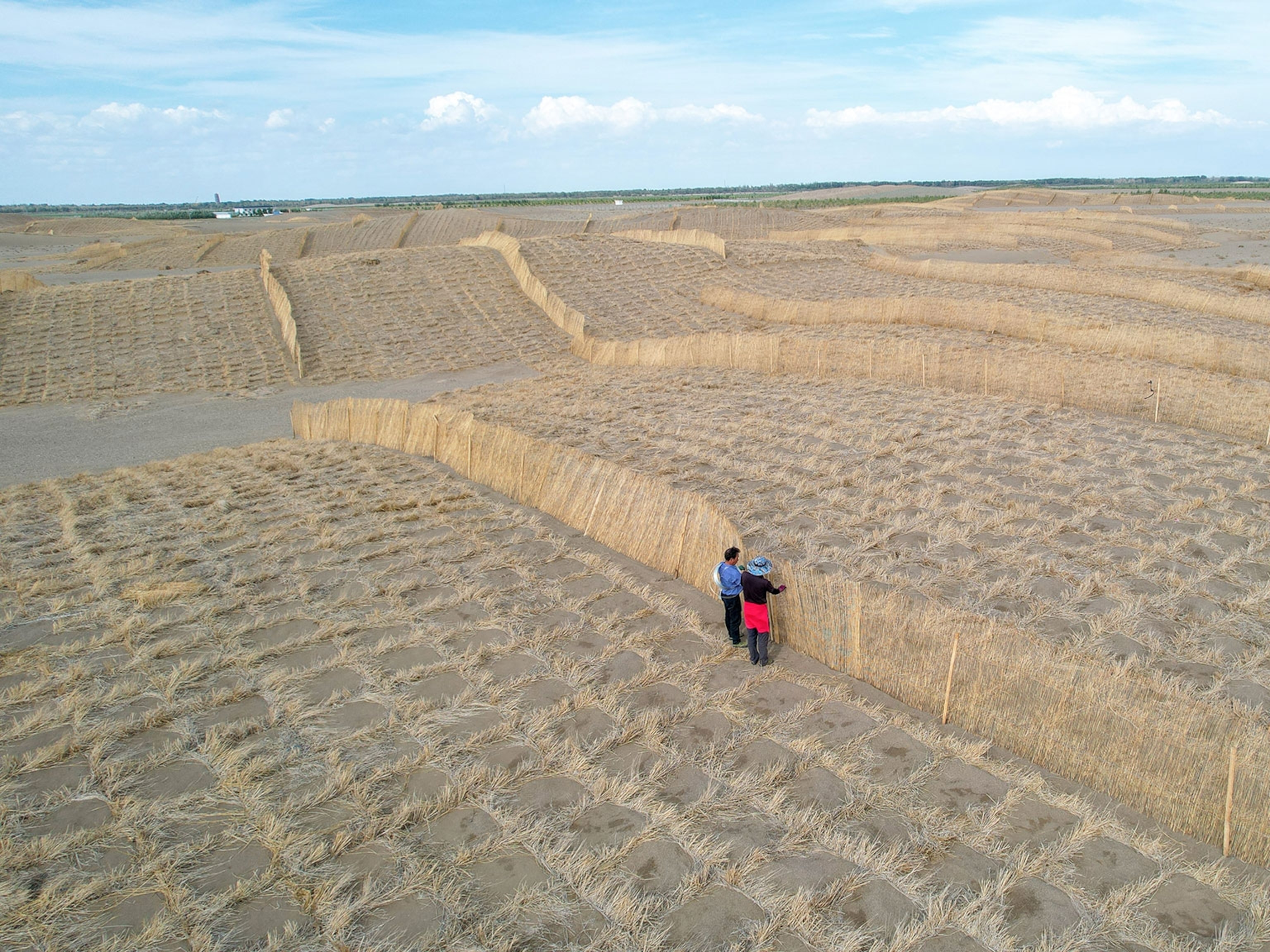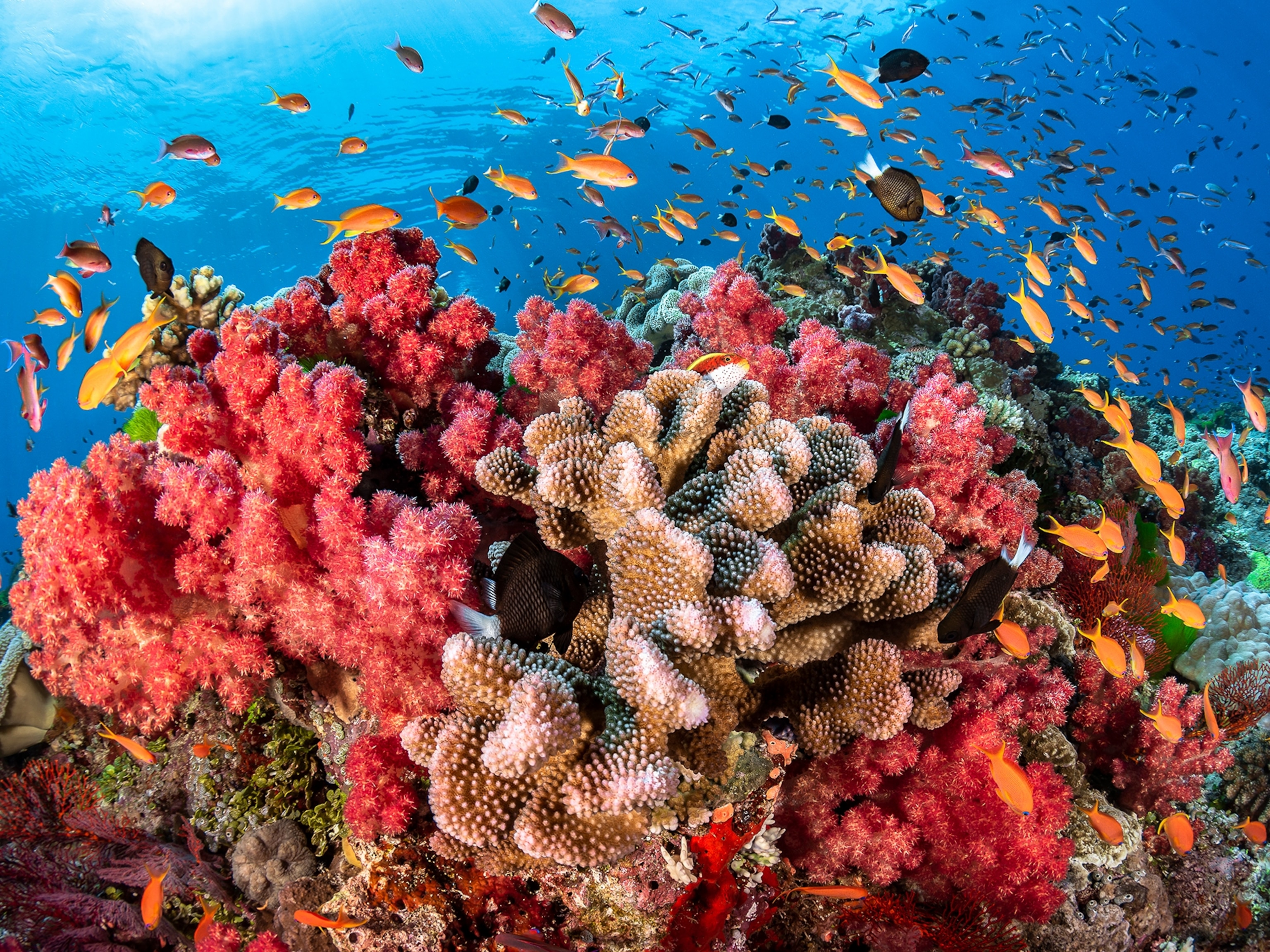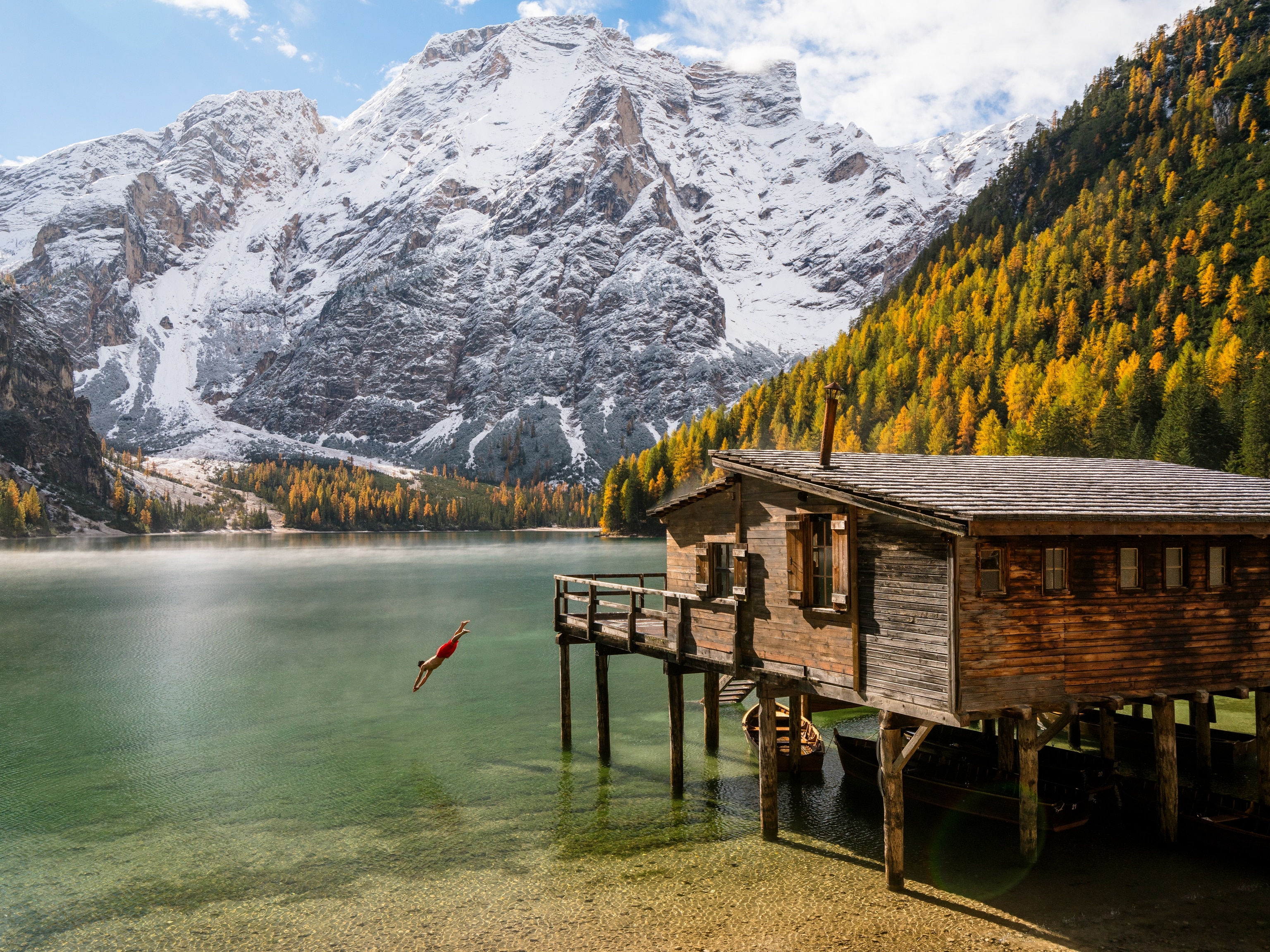
Should some of the world’s endangered places be off-limits to tourists?
Experts weigh in on what can be done to mitigate overtourism.
Habitat loss, overtourism, and the consequences of climate change have put more and more travel destinations at peril, even as the pandemic’s forced shutdowns gave once tourist-trampled places a breather.
This prompted us to ask our newsletter subscribers and Facebook followers the question: “Should there be places on Earth that are closed off to visitation? Should the wilderness be restricted in some way?”
Responses swamped our inbox, with most making arguments for limiting tourism. “The last few decades have taught us so much about what happens to wild places when people trample them,” wrote Margaret Cervarich, pointing to the trash pileup at Everest base camp.
“Many pristine and protected areas should be off-limits to humans completely, in my opinion. And a carefully evaluated few should be allowed for scientific studies,” wrote Charlisa Cato. Several, including Alper Takci, felt the limitations need to go further: “We should seal the whole planet off to humans.”

Indeed, some places have closed to travelers temporarily, including Iceland’s Fjaðrárgljúfur Canyon—made viral in a Justin Bieber video. Maya Bay, in Thailand’s Phi Phi archipelago, was overrun and its coral destroyed following the 2000 movie The Beach with Leonardo di Caprio. The beach, which has been closed since 2018, may soon reopen under stricter conditions. Other destinations have banned specific activities: In Hawaii, a new law goes into effect on October 28 prohibiting swimming with spinner dolphins.
We put the same question to the experts. Most agreed that locking places away from people is not the answer. “I am opposed to the idea that you would, at face value, ban tourism to fragile places,” says Jeremy Sampson, of the UK-based Travel Foundation, a nonprofit working to improve the tourism industry. “The fact is that certain kinds of tourism can help protect natural resources or preserve heritage.”
Strategies to ease overcrowding
There are many cases where interventions have helped to mitigate overcrowding. Last July, Italy banned large cruise ships from entering Venice’s waters and declared the city’s lagoon a national monument. Bhutan has for decades pursued a “high-value, low-volume” strategy, with prices only luxury travelers can afford, while investing in the preservation of nature and culture. Some destinations—including Amsterdam—have all but stopped actively marketing the city to tourists, switching objectives from “destination promotion” to “destination management” for the welfare of locals.
“We have many examples of visitor management systems that work to limit visitation in vulnerable places,” says Greg Klassen, a tourism strategist based in Vancouver. “For example, many national parks have areas open to visitors by first-come, first-served, lottery systems.”
Such measures have been gaining traction. In 2017, Peru limited access to Machu Picchu to two timed entries each day and restricted travelers to specific trails. Some of the new, stricter pandemic-era restrictions—visitors having to buy tickets for specific hours rather than half-day blocks, for example—will likely be permanent. In the U.S., Rocky Mountain and Yosemite National Parks recently introduced a timed-entry permit system to manage pandemic crowds. While temporary, they point to potential strategies for reducing congestion in the future.
(Can overtourism be made sustainable?)
Timed entry and lottery systems were also suggested by reader Wayne Woodman, who wrote, “I think a lot of our wilderness and national parks are being overwhelmed and need to be restricted. So yes. I would favor stringent controls with access based on a lottery basis so as not to restrict those less fortunate.”
Yet, lines and lotteries won’t solve everything. “It’s not just about the math. People always want to introduce a carrying capacity, and I think it’s just too simplistic. There could be other more nuanced solutions,” says Sampson. One idea is to make visitors promise to behave better. In recent years, destinations such as Iceland, New Zealand, Haida Gwaii, and the island of Hawaii have asked tourists to sign visitor pledges on or before arrival. The wording varies, but most ask visitors to tread lightly, protect nature, and respect the culture.

“Most visitors to Palau were not aware of what constituted reasonable behavior,” notes Klassen, who helped develop the Pacific country’s pledge. “A marine protected area covers the entire archipelago, yet visitors were taking home coral from the reefs, leaving debris and garbage behind, and in some cases behaving badly.”
The pledge outlines what visitors should and shouldn’t do (“Don’t collect marine life souvenirs. Do learn about the culture and people,” and unlike others, this one is enforced with fines of up to $1 million. “Even in places where they are voluntary, pledges still provide a level of education and commitment—even modest changes to visitor behavior can be helpful,” adds Klassen.
Growing a conservation economy
In some places, particularly in Africa, strictly controlled tourism is key to wildlife conservation, and its income is vital to residents who might otherwise resort to extractive industries to survive.
“In Rwanda, high-value tourism permits generate over $18 million per year, contributing to the repopulation of gorillas from a mere 254 in 1981 to 600 in 2019,” notes Tiffany Misrahi, vice-president of policy and research for the World Travel and Tourism Council.
Tourism is therefore crucial to the preservation of these wild places. “If these forgotten forests in the heart of Africa are not connected to the people of the world,” says Praveen Moman, founder of Volcanoes Safaris, which for 25 years has been bringing limited numbers of guests to Uganda and Rwanda to view mountain gorillas and chimpanzees, “there’s a very big danger that they could disappear altogether.”
Often left out of the conversation are the world’s Indigenous peoples— the ones who have kept the planet in balance for millennia.
“You can take a map of the environmental hotspots around the world and lay over it a second map of culturally endangered places, where indigenous peoples and their languages and traditions are struggling to survive. They are almost identical,” says Elizabeth Kapu’uwailani Lindsey, a Polynesian filmmaker, anthropologist, and National Geographic Explorer.
(Skip the crowds and visit these hidden gems instead.)
“So when we talk about place, we must also talk about people. We need the wisdom of those who have stewarded the land for thousands of years. We need to learn from them and nurture our own interconnectedness with the natural world.”
In Canada, on the coastal fjords of British Columbia, within the Great Bear Rainforest, lies a swath of land the size of Ireland that protects thousand-year-old trees and the rarest bear in the world. Within it, Spirit Bear Lodge—owned and operated by the Kitasoo Xai’xais Nation—welcomes visitors from all over the world whose dollars revitalize local communities and fund further conservation, including a successful effort to stop bear hunts.


“The elders always say, ‘What we have here is not ours, we’re just holding it for the next generations,’ and that’s really important in everything we do,” says Douglas Neasloss, chief councilor of the Kitasoo Xai’xais Nation. “The community has made clear it’s not just about money but about the future. We’ve been able to revitalize our culture and create a sustainable business model where we’re not pulling out a fish or cutting down a tree.”
To help connect social and conservation enterprises to travelers who might otherwise converge on the same fragile sites, the country of Jordan, along with the nonprofit Tourism Cares, created a “meaningful travel map” of the country. It pinpoints 12 experiences that tread lightly, disperse travelers, and have a big community impact. The program has been so successful that a similar map is planned for Colombia.
Closing off places to visitors should perhaps be left as the last resort, and some respondents to our original question agreed. “In order for endangered places to be preserved, there must be a minimum number of people allowed to wonder at and be fascinated by them,” wrote Ebrahim Hamad. “People will not protect what they do not know.”
Starting with the end in mind
Another idea: Build a destination from the ground up. Rising up in Saudi Arabia’s coastal desert on the Red Sea, in an area the size of Belgium, is a city-to-be called Neom. Plans call for the preservation of 95 percent of nature, “with zero cars, zero streets, and zero carbon emissions.”
“It’s one of the first destinations in the world entirely driven by regenerative tourism principles,” says Paul Marshall, Neom’s chief environment officer. The destination plans to use technology to transform the way people engage with nature and conservation, instead of channeling them into a visitors center.
“We want to have an inside-out visitors center using technology such as AR/VR to project [an image] while people are outside in nature,” says Marshall. “This won’t be nature pretending to be in a building; this will be educational information projected onto the real landscape.”
There are other technology applications. Just as Instagram and other social media contribute to the destruction of fragile places as copycats follow influencers to places “for the ‘gram,” some are using the same methods to reverse the damage.
The Leave No Trace organization, along with destinations such as Jackson Hole, encourages travelers to use generic rather than specific geotags to reduce the chances of a specific site being overrun. And the virtual reality that kept travelers “traveling” to destinations during the pandemic could be easily deployed to ease the burden on fragile destinations. France’s famous Lascaux caves, closed since 1963, has been sharing the site’s remarkable prehistoric art through a replica cave, a high-tech traveling exhibition, and virtual tours on its website.
“Achieving a future that allows access to places without harming them is no easy task. Individuals mean well... but have you ever found a group of people who absolutely agree on everything?” asks reader Barbara Cool. Perhaps not, but it’s crucial that we act.
“The question we should really be asking is how can travel be used as a tool to solve these global problems? Because it can,” says Sampson.
HOW YOU CAN HELP
While on-the-go, keep in mind these ways to travel sustainably. Avoid traveling to overtouristed places when you can. Mitigate crowding at fragile areas when you use social media. The Leave No Trace organization, along with some destinations, encourage travelers to use generic rather than specific geotags to reduce the chances of a specific site being overrun. If traveling to destinations such as Iceland, New Zealand, Haida Gwaii, and the island of Hawaii be sure to sign and adhere to visitor pledges to tread lightly, protect nature, and respect culture.
Norie Quintos writes and blogs about the world of travel from a cultural perspective. Find her on Twitter.







